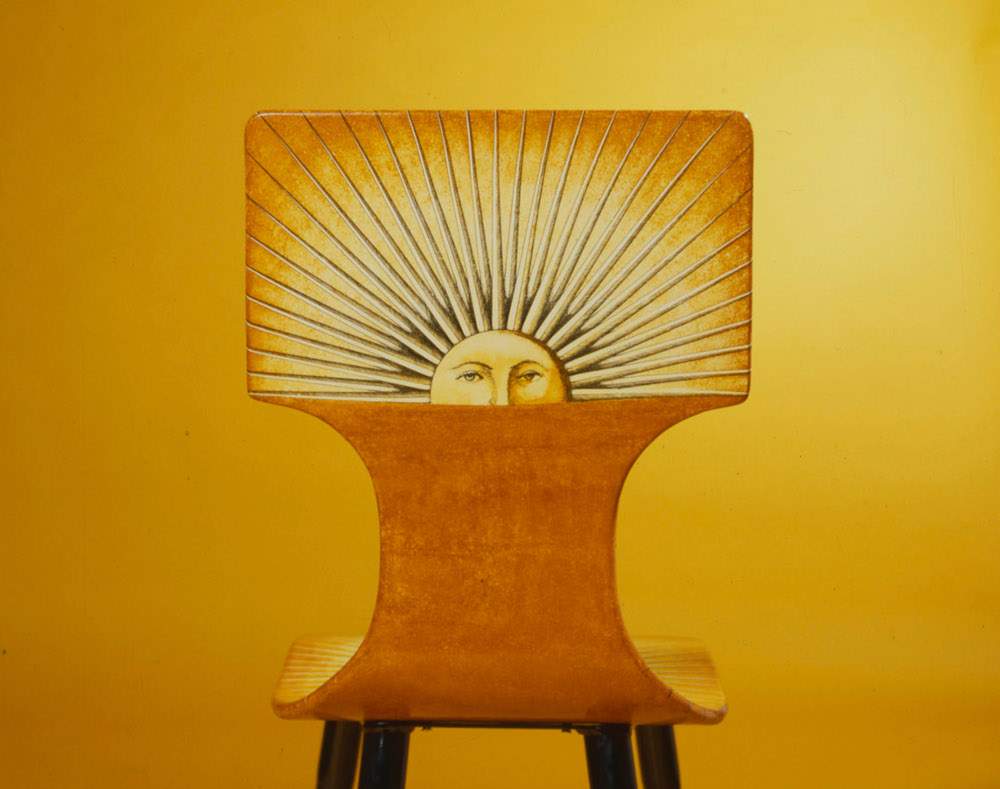In Gorizia, an exhibition recounts the myth of Italian style through fashion and design
Through August 27, 2023 Palazzo Attems Petzenstein in Gorizia presents the exhibition Italia Cinquanta. Fashion and Design. Birth of a Style, curated by Carla Cerutti, Enrico Minio Capucci and Raffaella Sgubin, conceived and promoted by ERPAC FVG (Ente Regionale per il Patrimonio Culturale del Friuli Venezia Giulia) - Museum of Fashion and Applied Arts of Gorizia.
A major exhibition that aims to reread the myth of Italian Style in the light of fashion and design, including the tradition of applied arts, a strong point of Italian production. It then adds cinema, which of that Italian Style was a very powerful means of amplification.
The time span examined is ideally that between the elections of April 18, 1948 and the 1960 Rome Olympics, a period of economic and cultural rebirth, of great fecundity from both the industrial and artistic and craft points of view, the auroral moment of Italian design.
The section devoted to design and applied arts will range from furniture to lamps, ceramics to glass, metals to furnishing fabrics, carpets and tapestries, choosing among the most exemplary excellences of the period, both from a creative and innovative point of view: the furniture designed by Franco Albini, Gio Ponti, Osvaldo Borsani, Gastone Rinaldi, Carlo Mollino, Ico Parisi, Marco Zanuso, Vico Magistretti, Luigi Caccia Dominioni, made by Poggi, Cassina, Fornasetti, Arflex, Azucena, Tecno, Fontana Arte, Rima, the lamps at the’avant-garde of Gino Sarfatti, Angelo Lelii, Max Ingrand and the Castiglioni brothers, the ceramics entrusted to industrial production by Guido Andloviz, Antonia Campi, Giovanni Gariboldi, Piero Fornasetti, Ettore Sottsass and those more “niche” ones created by Guido Gambone, Guerrino Tramonti, Salvatore Meli, Pietro Melandri, Alessio Tasca, Clara Garesio, the San Polo or, again, the “auteur” ones by Lucio Fontana, Fausto Melotti and Leoncillo Leonardi. Murano’s extremely rich production will be exemplified through the best of Venini & C. (Fulvio Bianconi and Paolo Venini), Aureliano Toso (Dino Martens), Barovier & Toso (Ercole Barovier), and Archimede Seguso, as well as Flavio Poli’s submerged glass for Seguso Vetri d’Arte and Giulio Radi’s precious polychrome reactions. Completing the innovative picture of furniture are precious enamels by Paolo De Poli and Studio Del Campo, some designed by Gio Ponti, silverware by Lino Sabattini, Eros Genazzi, and new industrial steel production by Sambonet and Alessi. There can be no shortage of fabrics, carpets and tapestries: from the fantasy of Piero Fornasetti to sketches, fabrics and tapestries by Oscar and Fausto Saccorotti, Enrico Paulucci and Emanuele Rambaldi for MITA, printed cottons by JSA and MTS, and “designer” carpets from Renata Bonfanti’s workshop. Contributing to recreating the atmosphere of the boom years are some iconic examples of industrial design, such as the Phonola 17/18 adjustable television set from 1956, the Cifra 5 mechanical clock by Solari, and also the 1950 Olivetti Lettera 22 typewriter and the 1957 Necchi Mirella sewing machine, both designed by Marcello Nizzoli and awarded the Compasso d’Oro, the world’s most important design prize, established in 1954. A section of the exhibition will be devoted to this theme.
The 1950s also represented a fundamental decade for fashion, so much so that the official birth of Italian fashion can be traced back to 1951, thanks to the enlightened initiative of Giovan Battista Giorgini, an entrepreneur who had the intuition to bring together in Florence the most important creative talents of the moment, selected from among those who chose not to be inspired by trends coming from Paris. Thus began the fabulous season of the Sala Bianca in the Pitti Palace. A selection of the period’s most significant designs, dresses and accessories will be on display, including creations by Emilio Pucci, Emilio Schuberth, Roberto Capucci, Simonetta, Alberto Fabiani, Sorelle Fontana, Jole Veneziani, Gattinoni, Biki, Curiel, Marucelli, Gucci and Salvatore Ferragamo. These signatures counted among their clientele Hollywood movie stars such as Ava Gardner, Marilyn Monroe, Elizabeth Taylor, and Esther Williams, as well as our divas such as Sophia Loren, Gina Lollobrigida, and Elsa Martinelli. At the end of the decade he would open his Valentino atelier, which would imprint the following decades with his style.
The Design and Applied Arts section will host about 150 pieces from public and private collections and will be curated by Carla Cerutti, former co-curator with Raffaella Sgubin of the exhibition Futurismo. Fashion. Design in 2009, and will benefit from the scientific advice of the Association of Archives of Italian 20th Century Applied Arts.
The Fashion section will be curated by Enrico Minio Capucci and Raffaella Sgubin with the partnership of the Roberto Capucci Foundation and the collaboration of Giovan Battista Giorgini’s Archives of Italian Fashion and the CSAC (Center for Studies and Archives of Communication) of the University of Parma. The garments on display will come from the Enrico Quinto and Paolo Tinarelli Collection, the Roberto Capucci Foundation, and the archives of fashion houses, such as the Salvatore Ferragamo Museum, the Germana Marucelli Association, the Micol Fontana Foundation, and the Emilio Pucci Archive Foundation.
Hours: Tuesday through Sunday from 10 a.m. to 6 p.m. Closed Mondays.
Image: Piero Fornasetti, Sedia Sole (1950s, Fornasetti-Milan, lithograph transferred to wood and hand-painted, 95x40x40 cm; Milan, Fornasetti Archives) © Courtesy Fornasetti
 |
| In Gorizia, an exhibition recounts the myth of Italian style through fashion and design |
Warning: the translation into English of the original Italian article was created using automatic tools. We undertake to review all articles, but we do not guarantee the total absence of inaccuracies in the translation due to the program. You can find the original by clicking on the ITA button. If you find any mistake,please contact us.




























